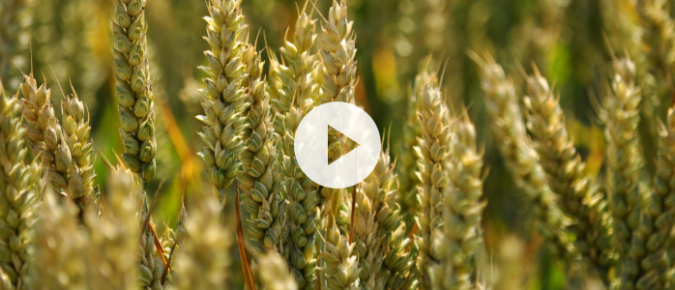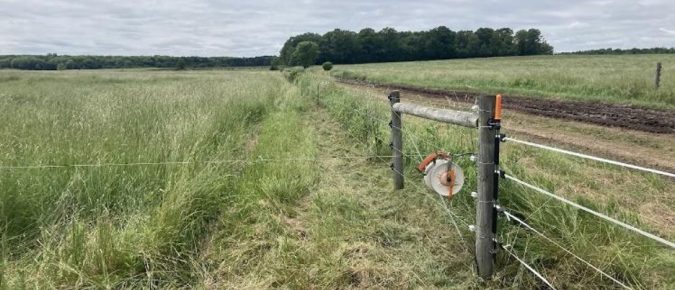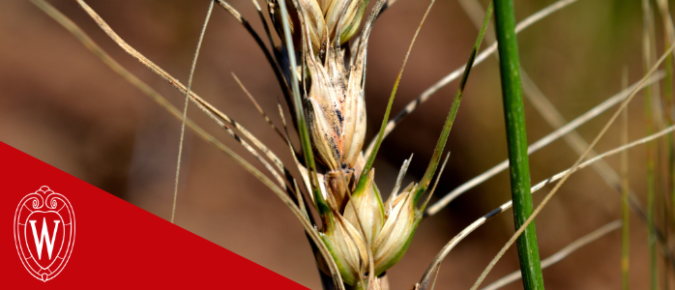As we head toward the end of summer, we are closing in on time for a late summer alfalfa establishment. Commonly in Wisconsin, this is done following a wheat crop in the spring. This can lead to a few challenges to consider: residual herbicide carryover and the effects of volunteer wheat on successful establishment.
The July 24 Badger Crop Connect webinar featured Dr. Shawn Conley, Extension Soybean and Small Grains Agronomist and Professor in the Department of Plant and Agroecosystem Sciences, University of Wisconsin–Madison. Shawn discusses preliminary results from 2024 Wisconsin winter wheat performance trials including yield, test weight and disease presence data; cover crop challenges in 2024; and the status of soybean stands across Wisconsin.
The July 24 Badger Crop Connect webinar featured Dr. Damon Smith, Extension field crops pathologist and Professor in the Department of Plant Pathology, University of Wisconsin–Madison. Damon gives an update on what diseases he’s seeing in Wisconsin farm fields in late July 2024. He mainly discusses white mold in soybean and tar spot in corn and management practices for each.
The July 24 Badger Crop Connect webinar featured Dr. Ed Hopkins, Wisconsin Assistant State Climatologist, and Natasha Paris, Extension regional crops educator for Adams, Green Lake, Marquette, and Waushara Counties. Ed and Natasha give an update on growing degree day accumulation, the status of corn and soybeans across Wisconsin, and trends in precipitation and soil moisture lately.
Japanese beetles (Popillia japonica) are an invasive beetle that feed on the leaves and flowers of crops, including corn and soybeans.
Harvesting small grains or processing crops in the summer months provides a great opportunity to plant a variety of cover crop species that can achieve several different benefits or goals such as soil erosion protection, nitrogen (N) supply to subsequent grain crops, and weed suppression.
A great deal of the success in a well-managed grazing system is owed to the design of the fencing infrastructure. Especially in managed grazing systems where livestock are rotated frequently, a well-designed fencing system that accommodates rotational grazing can make or break the system.
Did you just harvest your wheat? Are you looking to maximize the benefits of manure applied to your wheat fields? What about capturing the additional growing degree days and planting a cover crop after your wheat is harvested? Check out our latest Bumper Crop video on essential tips for manure applications and cover crops after wheat harvest!
July is National Corn Month! Watch this new Bumper Crop video highlighting and appreciating one of America’s most versatile and essential crops and current research exploring the future of corn production.
Michael Geissinger and Chris Clark, outreach specialists for the UW-Madison Extension Nutrient & Pest Management Program, meet at the field to talk about micronutrient deficiencies including how to assess if your crops have micronutrient deficiencies and research on whether or not applying foliar micronutrient fertilizer in season can correct them.
Damon Smith, UW–Madison Extension field crops pathologist, and Michael Geissinger, outreach specialist with UW-Madison Extension Nutrient & Pest Management in Northwest Wisconsin, talk about the conditions this year, what that means for tar spot development, and management considerations for controlling it if it shows up in your field.
DON (deoxynivalenol or vomitoxin) is a mycotoxin produced by the fungus responsible for Fusarium Head Blight (FHB), a common and economically important disease in small grains. DON is a problem because it is toxic to humans and animals. Grain grown on-farm and fed to livestock should be managed properly to avoid negative effects.
















